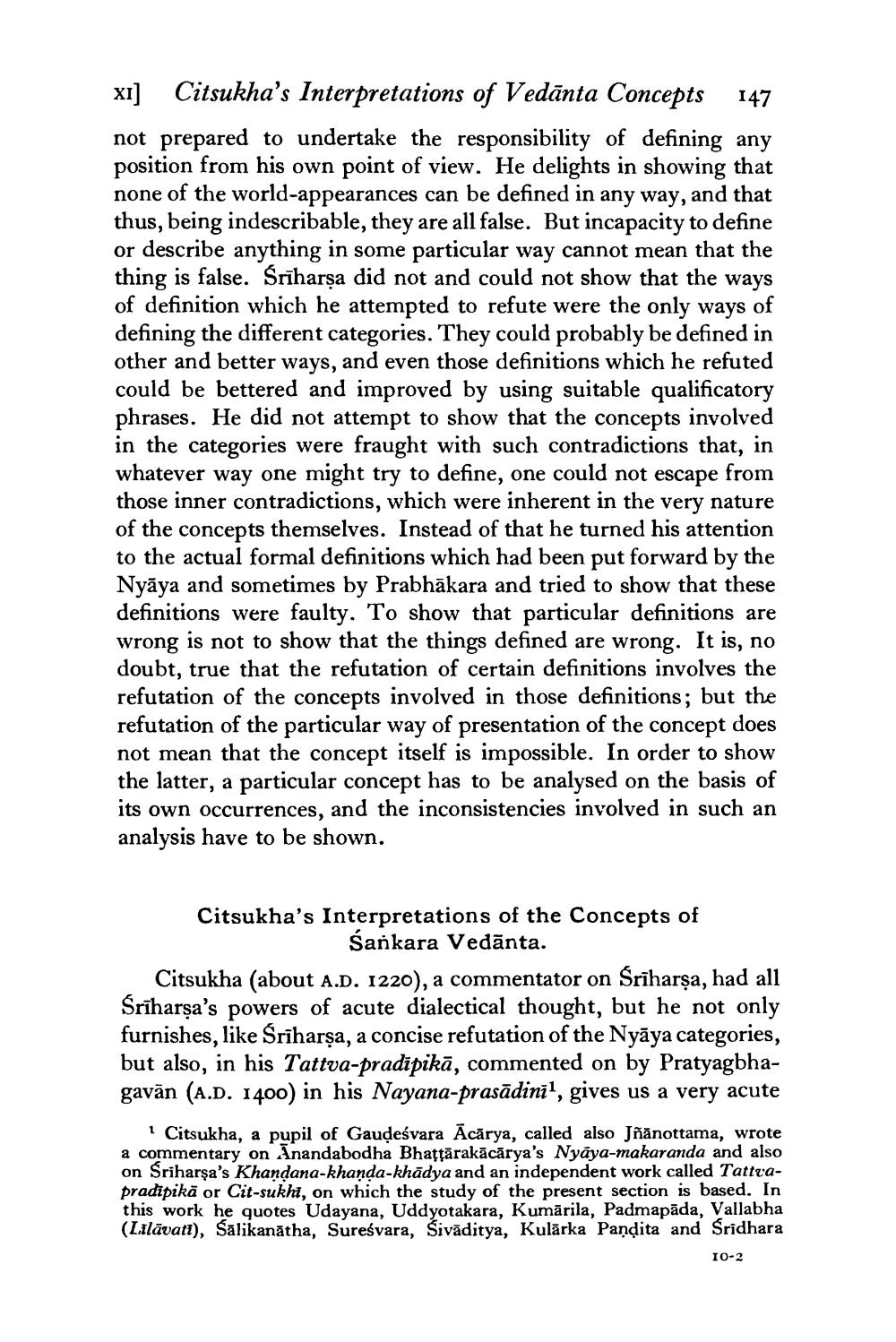________________
xi] Citsukha's Interpretations of Vedānta Concepts 147 not prepared to undertake the responsibility of defining any position from his own point of view. He delights in showing that none of the world-appearances can be defined in any way, and that thus, being indescribable, they are all false. But incapacity to define or describe anything in some particular way cannot mean that the thing is false. Śrīharsa did not and could not show that the ways of definition which he attempted to refute were the only ways of defining the different categories. They could probably be defined in other and better ways, and even those definitions which he refuted could be bettered and improved by using suitable qualificatory phrases. He did not attempt to show that the concepts involved in the categories were fraught with such contradictions that, in whatever way one might try to define, one could not escape from those inner contradictions, which were inherent in the very nature of the concepts themselves. Instead of that he turned his attention to the actual formal definitions which had been put forward by the Nyāya and sometimes by Prabhākara and tried to show that these definitions were faulty. To show that particular definitions are wrong is not to show that the things defined are wrong. It is, no doubt, true that the refutation of certain definitions involves the refutation of the concepts involved in those definitions; but the refutation of the particular way of presentation of the concept does not mean that the concept itself is impossible. In order to show the latter, a particular concept has to be analysed on the basis of its own occurrences, and the inconsistencies involved in such an analysis have to be shown.
Citsukha's Interpretations of the Concepts of
Sankara Vedānta. Citsukha (about A.D. 1220), a commentator on Śrīharşa, had all Srīharşa's powers of acute dialectical thought, but he not only furnishes, like Srīharșa, a concise refutation of the Nyāya categories, but also, in his Tattva-pradipikā, commented on by Pratyagbhagavān (A.D. 1400) in his Nayana-prasādini", gives us a very acute
Citsukha, a pupil of Gaudeśvara Ācārya, called also Jñānottama, wrote a commentary on Anandabodha Bhattārakācārya's Nyāya-makaranda and also on Sriharşa's Khandana-khanda-khādya and an independent work called Tattvapradipikā or Cit-sukhi, on which the study of the present section is based. In this work he quotes Udayana, Uddyotakara, Kumārila, Padmapāda, Vallabha (Lilāvati), Salikanātha, Sureśvara, Sivāditya, Kulārka Pandita and Sridhara
10-2
pracipit cork
hematik




